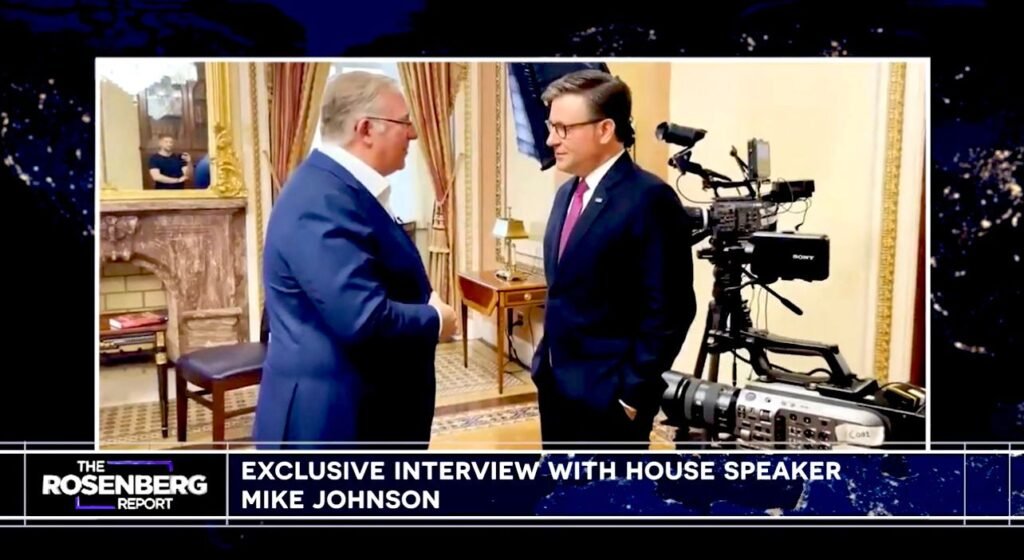By Anthony Marcus for Eurasia Business News, July 29, 2025. Article n°1660.

China and the U.S. recently held a third round of high-level trade talks in Stockholm aimed at extending the current tariff truce for another 90 days. Both sides agreed in principle to continue the pause on tariffs initially suspended in mid-May, but no detailed breakthroughs or exact duration for the extension were formally announced by the Chinese side.
The talks were led by Chinese Vice-Premier He Lifeng and U.S. Treasury Secretary Scott Bessent, and were conducted ahead of the August 12 expiration deadline of the 90-day tariff suspension.
Scott Bessent answered the questions of journalists during a press conference today.
Chinese officials expressed satisfaction with the implementation of the previous consensus and agreed to push for extending the truce on the significant part of the reciprocal tariffs. U.S. officials, including Bessent, noted that the extension depends on President Donald Trump’s approval, as he retains final authority over all trade agreements. Trump was briefed on the negotiations and appeared cautiously optimistic, with a decision on extension pending from him.
The goal of this extension is to avoid a return to steep tariffs on each other’s goods, which could disrupt global supply chains and escalate trade tensions. Analysts view a further 90-day extension as likely, helping to pave the way for a potential Trump-Xi meeting scheduled for late October or early November. However, no major breakthroughs were expected in this round, as deeper structural trade issues remain unresolved.
Read also : Gold : Build Your Wealth and Freedom
China and the U.S. are working to extend their tariff pause to prevent renewed escalation, pending final approval from President Trump, as negotiations continue amid complicated economic conflicts between the two largest economies.
Trump signed executive orders on February 1, 2025, imposing 10% tariffs on all imports from China, which took effect on February 4, 2025. Shortly after, on February 27, Trump announced an increase of another 10% tariff on Chinese goods effective March 4, 2025. These tariff actions are regarded as the start of the 2025 phase of the trade war between the two countries. This followed ongoing tariff expansions and economic measures throughout the early months of 2025, including tariffs on other countries and specific sectors such as steel, aluminum, autos, and pharmaceuticals. In early April, Trump added 34% tariff on Chinese imported goods.
China immediately responded to the Trump measures: in February, Beijing imposed 10% tariffs on oil and agricultural machinery from the United States, 15% on coal and liquefied gas, and also filed a complaint with the World Trade Organization (WTO). Since March 10, China has additionally imposed a 10-15% duty on U.S. agricultural products.
Read also : List of countries targeted by Trump tariffs in 2025
The U.S. and China agreed to a 90-day truce starting May 14, lowering the reciprocal tariffs from as high as 125% down to 10%. However, the existing 20% fentanyl-related tariffs remain in place, making the effective tariff rate on most Chinese goods about 30% currently. They have been negotiating since then to agree on new tariff regime.
Strategic and Economic Implications
This renewed trade confrontation reflects the deep, structural rivalry between the world’s two largest economies—a competition that is no longer limited to goods and services, but now extends into technology, energy security, supply chains, and geopolitical influence.
For the United States and the president Trump, tariffs have become a strategic instrument of economic nationalism. The Trump administration has made it clear: trade policy is not only about balancing deficits, but about reshaping the foundations of industrial capacity. In sectors deemed vital to national security—such as semiconductors, clean energy, pharmaceuticals, and critical minerals—Washington seeks to reduce dependence on Chinese imports and reclaim domestic manufacturing capabilities. The objective is twofold: strengthen American economic sovereignty and secure jobs for middle-class workers and voters for Trump, particularly in battleground states like Pennsylvania, Michigan, and Wisconsin.
President Trump has framed the 2025 trade policy under the banner of “economic patriotism”, arguing that bringing industry back to U.S. soil is not just good economics, but a matter of national strength and self-reliance. The White House has also floated additional tax incentives and reshoring subsidies to further motivate companies to invest domestically rather than outsource to Asia. This protectionist stance has strong political appeal among Trump’s voter base, but draws criticism from free trade advocates and multinational corporations concerned about retaliatory risks and inflationary pressure.
For China, the trade war is not merely an economic dispute, but a test of resilience and a measure of its rise as a global power. The leadership in Beijing interprets U.S. tariffs as part of a broader attempt to contain China’s ascent, particularly in high-tech fields like AI, 5G, aerospace, and green technology. In response, Beijing has doubled down on self-reliance policies, expanding its industrial subsidies under the “Made in China 2025” strategy and accelerating domestic innovation pipelines.
Chinese retaliation is also a carefully calibrated signal to other nations: Beijing will not yield to pressure, and is willing to leverage its global economic footprint—including access to its massive consumer market—to resist coercion. At the same time, Chinese leaders remain engaged in trade diplomacy, positioning themselves as defenders of multilateralism in forums like the WTO and BRICS.
Global businesses are bracing for further uncertainty, especially in energy, agriculture, rare earth elements, and advanced electronics. As tariffs, export controls, and national security reviews multiply, multinationals are increasingly reconfiguring their supply chains, reducing exposure to China by shifting manufacturing to Vietnam, Thailand, India, and Mexico—a movement known as the “China +1” strategy.
This de-risking trend is likely to accelerate if negotiations fail and the truce collapses. It reflects a broader shift in the world economy: from efficiency-driven globalization to a new age of strategic fragmentation, where national priorities override global integration.
Our community already has nearly 150,000 readers!
Subscribe to our Telegram channel
Follow us on Telegram, Facebook and Twitter
© Copyright 2025 – Eurasia Business News. Article no. 1660







